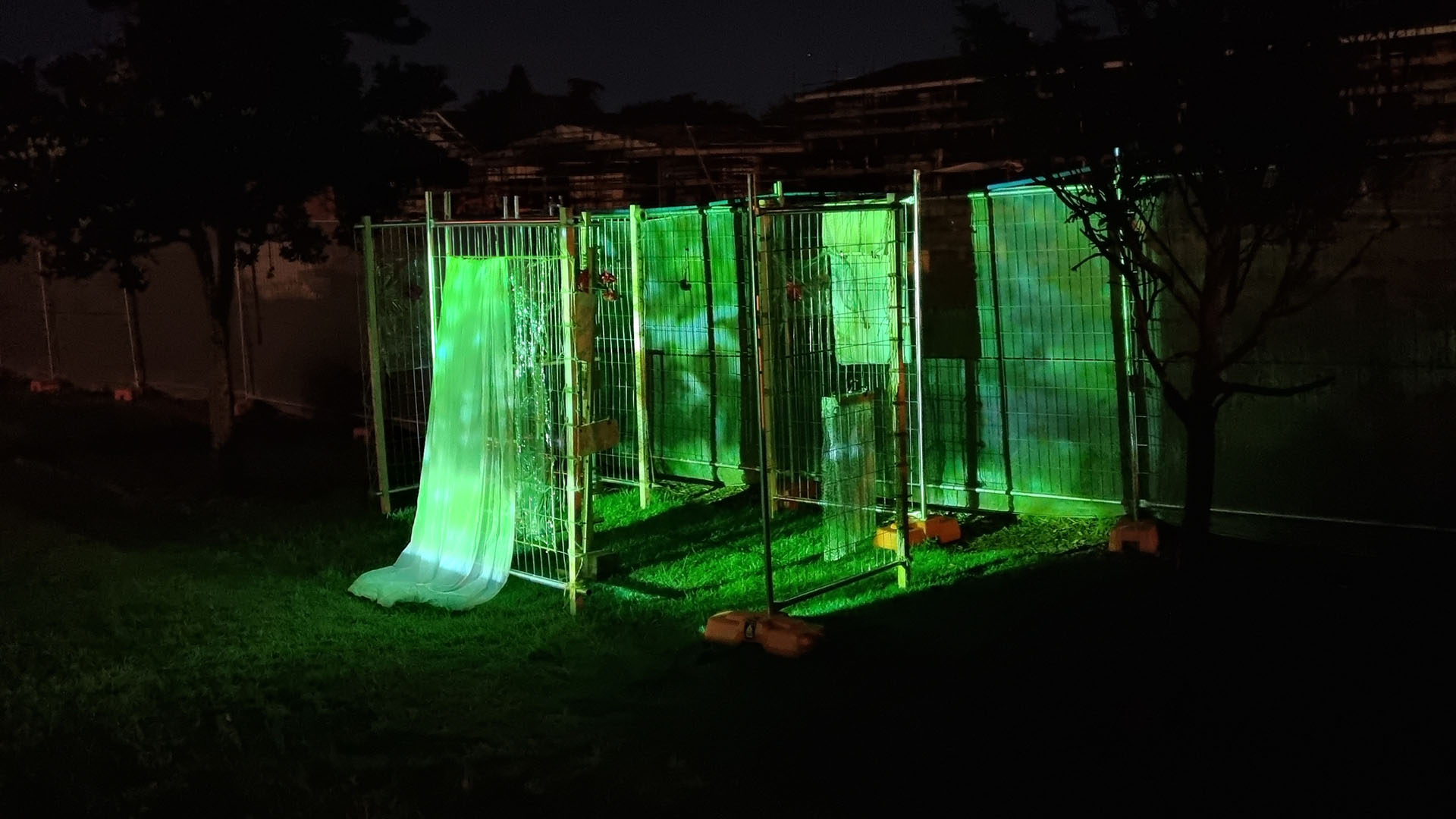


Shifting: Move, Transfer, Relocate, Rearrange, Change, Alter, Adjust, Modify
Proximity: Accessibility, Closeness, Juxtaposition, Presences, Relationships
Shifting Proximity underlines the constant state of change and development that is the internalised human experience through the exploration of personal and public spaces. The provisional structures made from industrial fencing along with objects and videos, drawn from archives of childhood memories, examine the intersection of personal and public spaces as a means to formulate a spectrum of mental and emotional contemplation. The configuration of the structural pieces within the installation encompasses the work in and of itself, yet simultaneously these structures possess an affinity with the space and environment they define.
The provisional structures within Shifting Proximity are improvised assemblages realised as installations around the concepts of introspection and accessibility. These concepts arise from an interest in the relationship between personal and public spaces as formulated sites of experience. The installation uses industrial fencing along with domestic items that hold archival significance to my home life. The Domestic aspect of my work references family memories through the use of curtains, twine, handmade flowers and home videos. Through the making of pink paper flowers coated in bees wax,1 I looked to preserve memories of the environments I grew up in: gardens and landscapes filled with pink Hibiscus and Alstroemeria flowers. Presenting these handmade flowers onto manufactured fences further highlights the relationship between the personal and the public spaces.
The provisional nature of the industrial fences that enables them to be reconfigured, speaks to the constant state of change and development that is the internalised human experience. To assemble an installation in this way examines our ability to reflect and develop through these opposite spaces: the personal and the public and how it connects to comfortable and uncomfortable experiences. Exploring different sites such as the studio, my home garden, and behind my house near a construction site, further propose the idea of accessibility, and how it applies to situating an installation in various locations. This exploration of different sites enables the project to move through areas and reform the space it resides in. The space behind my house became a significant area as it exists at the intersection of a construction site and my home and locates the work on the threshold between the personal and the public.
Through this the work looks to evoke a sense of intimacy that is comparable to the mental and emotional intimacy that is found in Marina Abramovic, An Artist is Present, 2010. 2 The way that Abramovic elicits an emotional response through her intimate gaze with participants, parallels the exploration of mental and emotional connections between the spectator and the space in Shifting Proximity. The way this allows the audience to engage with the installation physically, mentally and emotional is a key factor of my research. The expectation that spectators will actively observe and autonomously inhabit the installation is rooted in the desire to create intimate and immersive viewers installation space.
This observation of one’s mental and emotional position through reconfiguring space examines the desire to personalise a given area and reform space as a representation of an introspective archival realm. This is suggested by projecting old videos onto the installation space. Creating a liminal space: the images of the projection is situated in the present day yet set a time and place elsewhere. Through the projection, the work examines the past and its impact on the present which becomes a mirror of the human psyche and our ability to reflect on the past.
Jacques Derrida, and Eric Prenowitz. "Archive Fever: A Freudian Impression." Diacritics 25, no. 2 (Summer 1995): 9-63. doi:10.2307/465144.
Samuel Bianchini et al., Practicable from Participation to Interaction in Contemporary Art,(Cambridge, MA: MIT Press, 2016), (pg 297-301)


